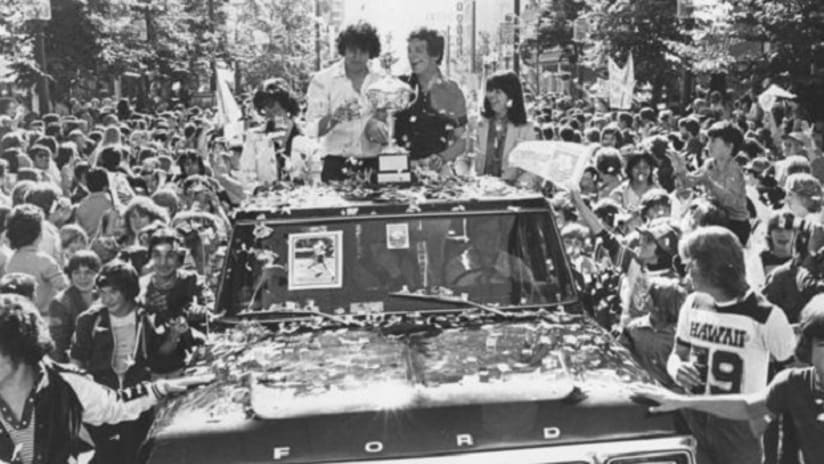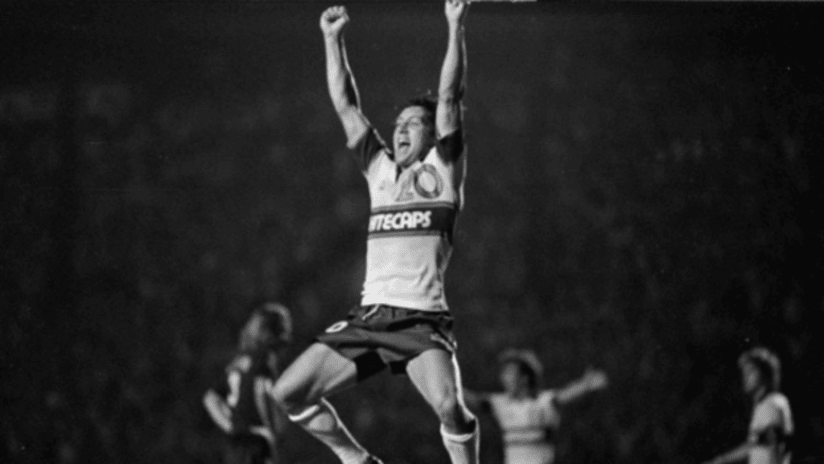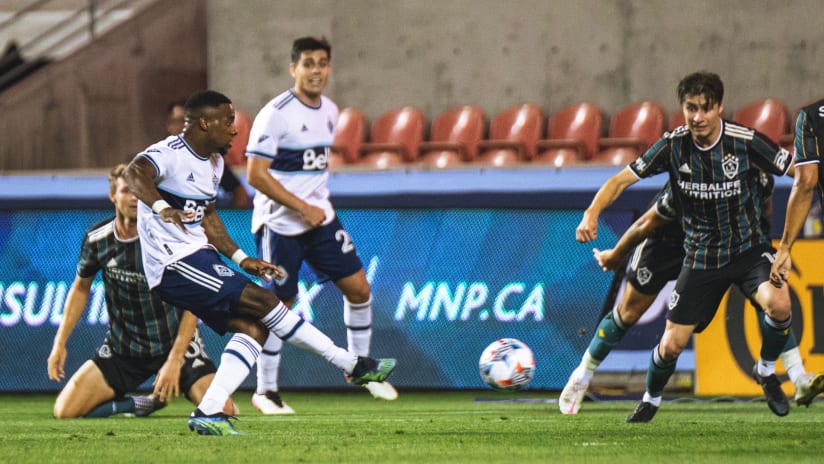The Whitecaps story begins in 1973 on the top floor of a Davie Street hotel in downtown Vancouver. After five years without professional soccer, executive vice-president Denny Veitch announced that 'The Beautiful Game' would be returning to town. The city was home to top-tier soccer during the late 1960’s when the Vancouver Royal Canadians began life in the United Soccer Association, a league that was comprised of imported foreign squads. The Royal Canadians were, in fact, Sunderland AFC of the English Football
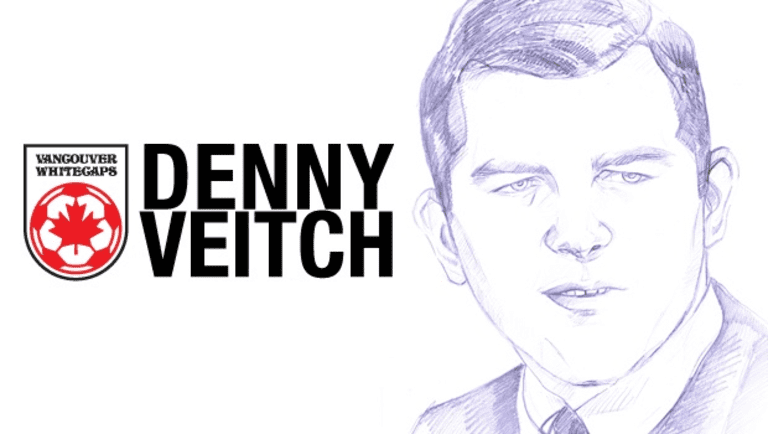
League, and were led by former Scotland manager Ian McColl.
In 1967, the United Soccer Association merged with the National Professional Soccer League to form the North American Soccer League (NASL), where the renamed Vancouver Royals would play for one year before folding. The Royals came and went, but soccer was here to stay.
Veitch was confident that Vancouver would make a triumphant return to the NASL, but knew that the new team needed a proper identity. Inspired by the white crests that tip the waves of the Pacific shoreline and the snow-capped mountains that cascade across the city background, the Whitecaps name was born. "He was driving over the Lions Gate Bridge on a beautiful day and he looked up and there were whitecaps on the mountains, and he looked down and there were whitecaps on the waves in the water, and there it was," said future son-in-law and current club president Bob Lenarduzzi.
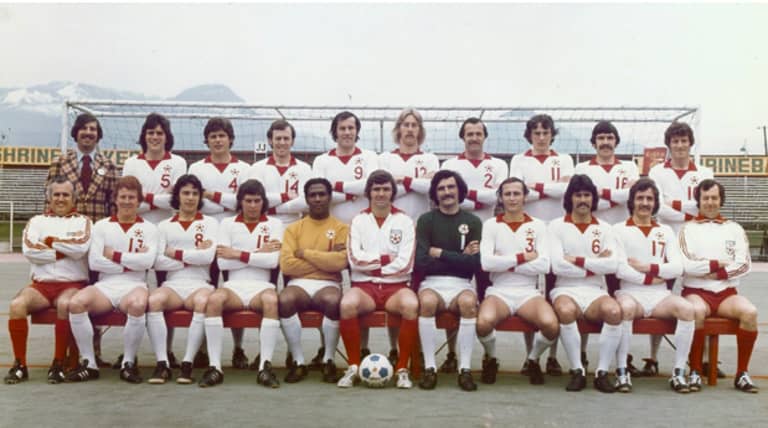
The team made their debut during the 1974 NASL season, playing in colours of red and white. Their logo was rather simple, and more Canadian than anything else, a standard crest decorated only by a red soccer ball, with a maple leaf in the middle and the words 'Vancouver Whitecaps' above. The team attained modest success during their first four years, making the playoffs in 1976 and 1977, only to lose to the local rivals Seattle Sounders. The following season, the club won their first-ever playoff match, beating Toronto Blizzard 4-0 before falling to their other Pacific Northwest rivals Portland Timbers in the 1978 National Conference semifinals.
After several years of mediocrity, the Whitecaps brand underwent its first makeover. Before the 1979 season, the club changed their colours from red and white to blue and white, and swapped the maple leaf for a swerving wave to better reflect the picturesque Pacific landscape that the Whitecaps name implies. The maple leaf moved to the 'Vancouver Whitecaps' title. Dick Martin designed the new logo for the club, and while the aim was partly to employ a more professional logo, his main goal was to create a west coast vibe. "We kept the shield style in order to tie into the trend of the English soccer leagues, but we changed to the blue because it better symbolized the location, the water all around the area," Martin said. Only after making this change did the team break through to their golden era.
Gord Couling was the Whitecaps public relations and creative services manager at the time and was part of the committee that sought a new image for the club. Prior to his passing in October of 2013, he shared his memories of the good old days with whitecapsfc.com. "We were looking for something that was more representative of the west coast and the lovely city and province that the team played in," he told whitecapsfc.com. "The look and the success of the team went hand-in-hand. I think that people could relate to the new look because it was more relevant and attractive, and because of that, they really embraced the club and had more pride for the team."
The 1979 Whitecaps still remain one of the most celebrated professional sports teams ever in Vancouver. "We were a very proud organization that looked good and played well," said Couling.
The squad included the likes of Alan Ball, starter on the 1966 World Cup winning England squad, as well as fellow Englishmen John Craven, Kevin Hector, Phil Parkes and Trevor Whymark. There was Scotsman Willie Johnston and local lad Bob Lenarduzzi, who had just returned from a spell with Reading FC in England. The influx of talent from the United Kingdom led to the team becoming known as 'The British Mafia'.
After finishing first in the National Conference’s Western Division for a second straight year, head coach Tony Waiters led the Whitecaps to their crowning achievement. The club began their memorable playoff run by beating Dallas Tornado in the National Conference quarterfinals before facing Los Angeles Aztecs in the conference semifinals. A goal from Hector at Empire Stadium sent the home side through to the conference finals against the star-studded New York Cosmos. "We felt quite confident going into the series with the Cosmos," recalls Lenarduzzi. "We weren’t reliant on any one player, whereas the Cosmos were a team of superstars. We knew that we had to win as a team."
The Whitecaps left Vancouver with a 2-0 lead, but the return leg was won by the Cosmos 3-2. "I don’t think any of our players were intimidated," proclaims Waiters. "We’d kind of had their number the past few years." Back then, the format of playoff match-ups was not based on aggregate, so after winning a game apiece, the series went to a decisive mini-game and an eventual shoot-out. Derek Possee eventually scored the winner, shocking the favoured Cosmos and sending the Whitecaps to the championship game.
<a href="//www.youtube.com/embed/EYgPA5WvnYw"></a> |
<b>Highlights: 'Caps beat Tampa Bay Rowdies in '79 Soccer Bowl</b> |
In front of a packed house of 64,045 at Giants stadium in East Rutherford, New Jersey, the Whitecaps squared off against Tampa Bay Rowdies in the 1979 Soccer Bowl. Waiters may have coached the team to the final, but it was the late Alan Ball who had the last word before the team took to the pitch. The former World Cup winner simply told his teammates, "Boys, you’re going to remember this day for the rest of your lives. Let’s make it a good one."
Two goals from Whymark led the 'Caps to their first-ever title, as they downed the Rowdies 2-1. Their achievement did not go unnoticed. The club had grown to become the city’s top sports franchise and were welcomed home to the largest reception in British Columbia history. More than 100,000 people packed the streets to recognize the new kings of North American soccer during a championship parade on September 9, 1979.
"The team’s achievement allowed for the city to celebrate a championship, which they hadn’t been able to do since the BC Lions won the Grey Cup in ‘64," explains Lenarduzzi. "The celebration really paved the way for the type of festivities that we saw during the Olympics [in 2010]." This was the heyday of professional soccer in Vancouver, summed up by Carl Valentine famously proclaiming to the crowd – "You are the number one fans, and we are the number one team!"
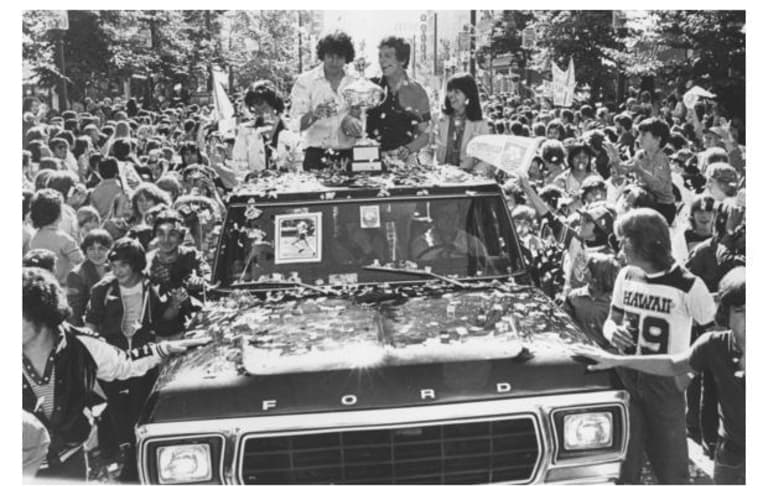
The Whitecaps flag was held high for the next several seasons, as the team consistently made the playoffs and won the division on two more occasions in 1981 and 1983. Crowds piled into Empire Stadium to watch their beloved franchise before the club relocated to BC Place in 1983. Fans eagerly followed the 'Caps to the newly-built stadium, with 60,342 people coming to watch the first match at the opening of the venue against Seattle Sounders. Although the Whitecaps brand was as strong as ever, the NASL was far from stable. The 'Caps, however, stayed until the bitter end before the NASL ceased operations in 1984.
As a result, the first chapter of the Vancouver soccer saga was at an end.

